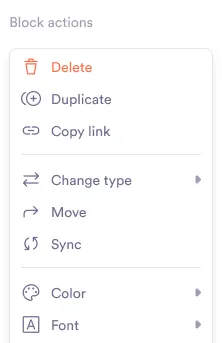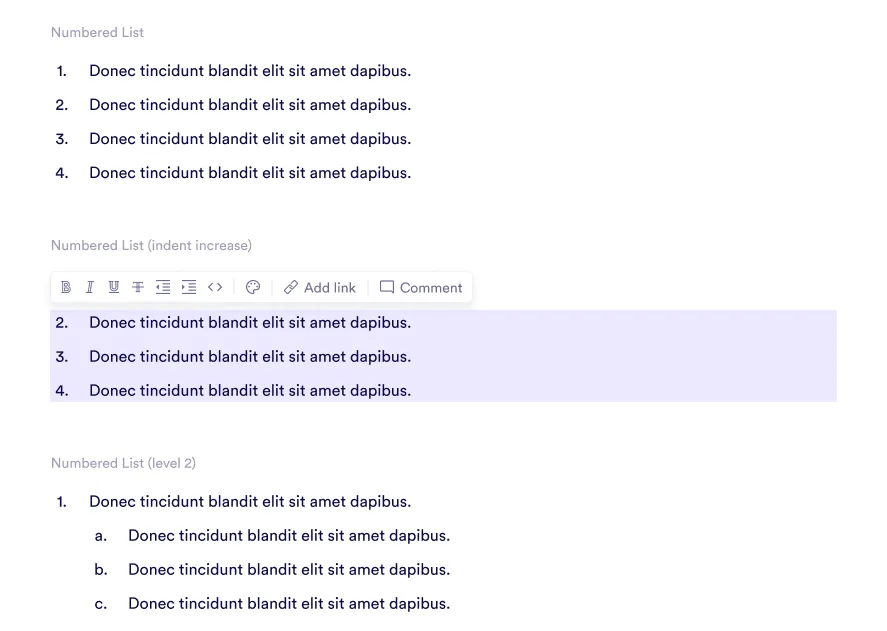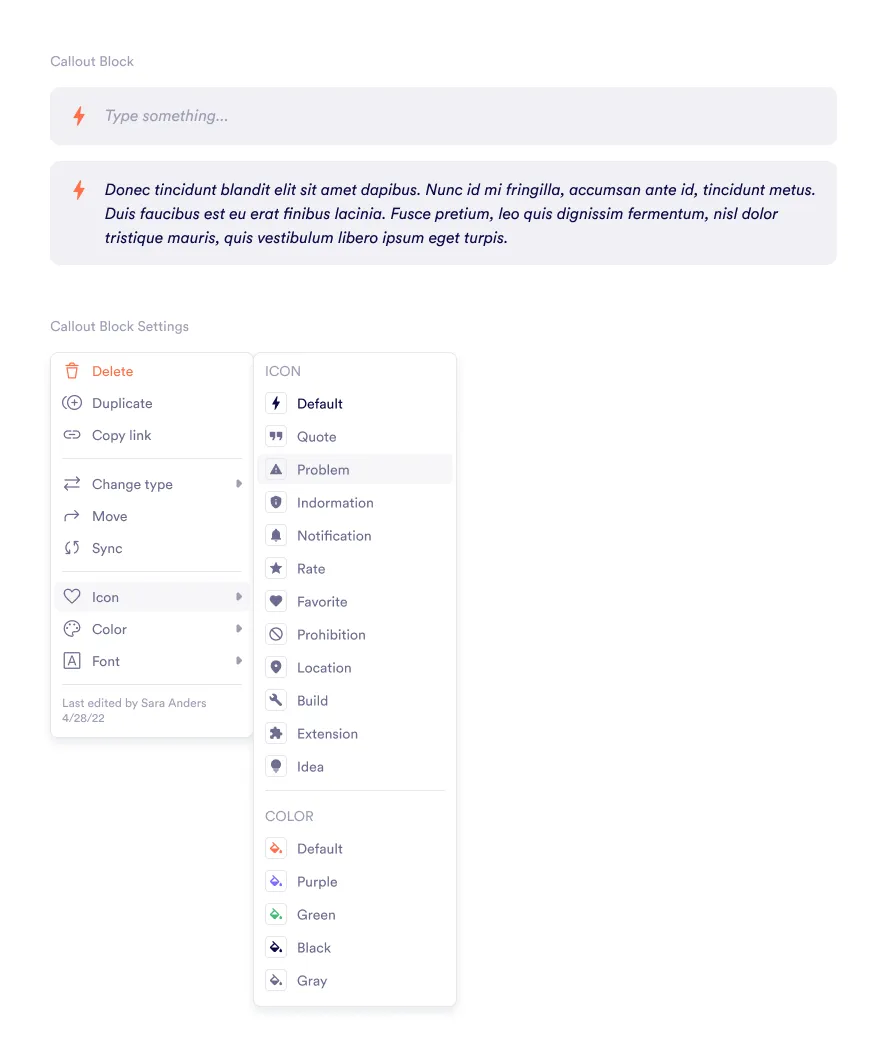Pages and Basic Blocks
Learn how to create and manage pages, blocks, and text in Pivot for flexible content organization and collaboration.
Creating and managing pages, blocks, and text in Pivot allows for flexible content organization and collaboration. Whether you’re building hierarchical page structures, customizing blocks, or formatting text for clarity and emphasis, Pivot provides robust tools to streamline your workflow. This guide covers the essential features, including creating pages, block actions, heading styles, and text block functionalities.
Creating a Page Inside a Space
To create a page:
- Click the ”+” button: Located within the interface, it allows you to quickly add a new page.
- Use the ”/” command: Type
/in the text editor and select Page from the dropdown menu.
Pages can also be created inside existing pages, allowing you to build hierarchical structures for better organization. For example, sub-pages within a main page might be necessary to break down complex topics or projects into manageable sections.
Block Actions
Blocks come with a variety of actions to help you manage and customize your content effectively.
- Delete: Remove the block entirely from your page if it’s no longer needed. - Duplicate: Create a copy of the block for reuse or modification elsewhere. - Copy link: Generate a link to the specific block for easy sharing or reference within the space. - Change type: Transform the block into another type, such as changing a text block into a checklist or a table. - Move: Relocate the block to another section of the page or to a different space entirely. - Sync: Link the block across multiple pages so that updates made in one instance are reflected everywhere it’s synced. - Color: Customize the block’s background or text color for better visual organization or emphasis. - Font: Adjust the font style, size, or weight to match the tone or structure of the content.

Headings
- Big Heading - Used for titles or major sections. - Medium Heading
- Works well for subtopics or key divisions within content. - Small Heading - Suitable for minor sections or detailed labels.

Text Block
The text block is a fundamental feature in Pivot, designed to support all your writing needs. From drafting ideas and creating detailed documentation to collaborating with team members, the text block offers a flexible platform for structured and creative content.

- Bold: Highlight key words or phrases for emphasis. - Italics: Add subtle emphasis or distinguish specific terms. - Underline: Draw attention to critical points or key sections. - Strikethrough: Indicate outdated or unnecessary information without removing it. - Code block: Format text as code, useful for sharing snippets or technical information. - Indent: Adjust the text alignment for hierarchical organization or quotes. - Color: Customize the text color to emphasize or visually categorize content. - Add link: Hyperlink text to external websites, other pages, or blocks within Pivot. - Comment: Enable team collaboration by leaving comments directly on text for feedback or discussion.

Lists
- Bullet Lists - Great for summarizing ideas or organizing concepts. - Numbered Lists - Ideal for step-by-step instructions or ranked tasks. - Checkbox Lists - Helps track progress for to-do lists or workflows.

Quote
The quote block is useful for highlighting key insights or references.
Use cases:
- Reference someone’s words.
- Summarize a key idea.
- Spotlight important content.

Divider
The divider block visually separates sections, improving readability.

Callouts
Callout blocks are designed to highlight important messages, tips, or warnings within your content.

Was this guide helpful?